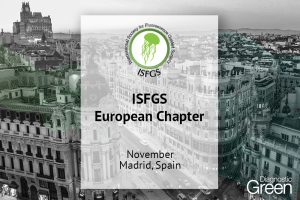Most of the available evidence on the use of indocyanine green (ICG) fluorescence in clinical practice consists of articles published by surgeons of the Asian-Pacific area. We performed a prospective cohort study to assess the patterns of ICG fluorescence in Western hepatocellular carcinoma (HCC) counterparts.
Methods: From April 2019 to January 2022, a total of 31 consecutive patients who underwent laparoscopic liver resection (LLR) for superficial HCC were enrolled in this prospective study. All patients underwent laparoscopic staging with both laparoscopic ultrasound (LUS) and ICG fluorescence imaging.
Results: A total of 38 hepatocellular carcinomas (HCCs) were enrolled: 23 superficial (surfacing at the liver’s Glissonian capsule), 5 exophytic, 5 shallow (<8 mm from the hepatic surface) and 5 deep (>10 mm from the hepatic surface). The detection rate with preoperative imaging (abdominal CT/MRI), LUS, ICG fluorescence and combined modalities (ICG and LUS) was 97.4%, 94.9%, 89.7% and 100%, respectively. The five deep seated lesions underwent ultrasound-guided laparoscopic thermal ablation. The other 33 HCCs were treated with minimally invasive liver resection. Intraoperative ultrasound patterns were registered for each single nodule resected. The ICG fluorescence pattern was classified in two types: total fluorescence (all the tumoral tissue showed strong and homogeneous fluorescence), n = 9/33 (27.3%), and non-total fluorescence (partial and rim fluorescence), n = 24/33 (72.7%). There was a statistical correlation between ICG patterns and grade of differentiation. Almost all lesions with uniform fluorescence pattern were well-differentiated HCCs (G1-G2), while partial and rim-type fluorescence pattern were more common among moderately and poorly differentiated HCCs (G3-G4) (88.9% vs 11.1%, 37.5% vs 62.5%, P = .025, respectively).
Conclusions: ICG fluorescence imaging could be used to identify early the grade of HCC, ie intraoperatively, thus influencing the intraoperative treatment.




